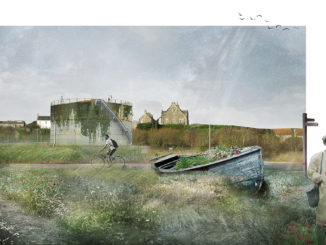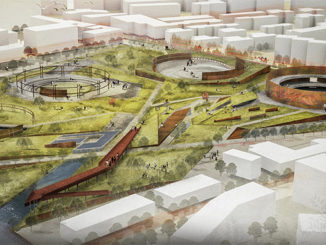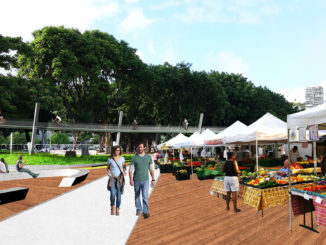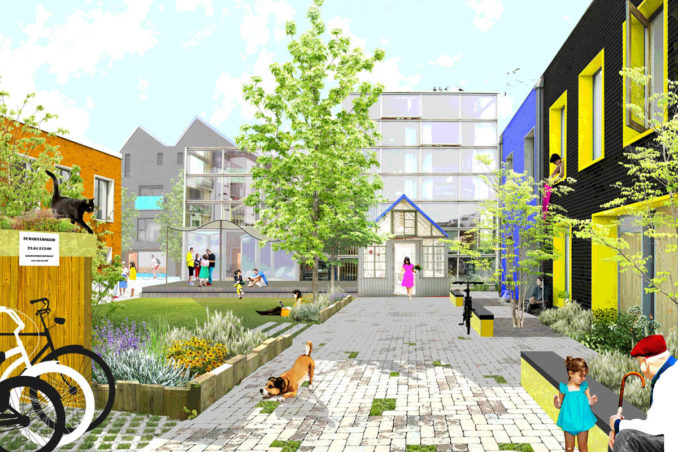
Reykjavik is suffering from a mental health crisis. Iceland consumes more anti-depressants than any other country in the world, and by some margin. In recent years the rate of prescriptive treatment has steadily increased, however so has the number of depressive disorders; clearly the drugs aren’t working.
Mental health is complex, it is affected by many factors which combine uniquely for each individual and therefore many different treatments are needed. Conventional medication is not the sole solution. There is no magic pill.
So why is Iceland the world’s no.1 depressed state?
In short, there are more cars than people. The country has completely succumbed to car culture and understandably so. Iceland has a sprawled urban morphology and harsh Nordic climate. Why walk 30 minutes and freeze when you can travel comfortably by car in a fraction of the time?
The detrimental effect of a car centric lifestyle has long been known, thanks to classic texts by Jane Jacobs and Jan Gehl. Yet in Iceland the car is still king. When Charles Montgomery was researching for his book ‘Happy City’, he found that the fundamental component to a person’s happiness is the strength of their social connections. With that in mind it is worth recalling Donald Appleyard’s famous research conclusion ‘Cars rip apart the social fabric of our communities’.
Icelanders have been robbed of a social life between buildings by sprawl, cars and climate. The core aim of the Living Hygge project is to remedy this injustice.
hygge [hue-gah]
a quality of cosiness and comfortable conviviality that engenders a feeling of contentment or well-being
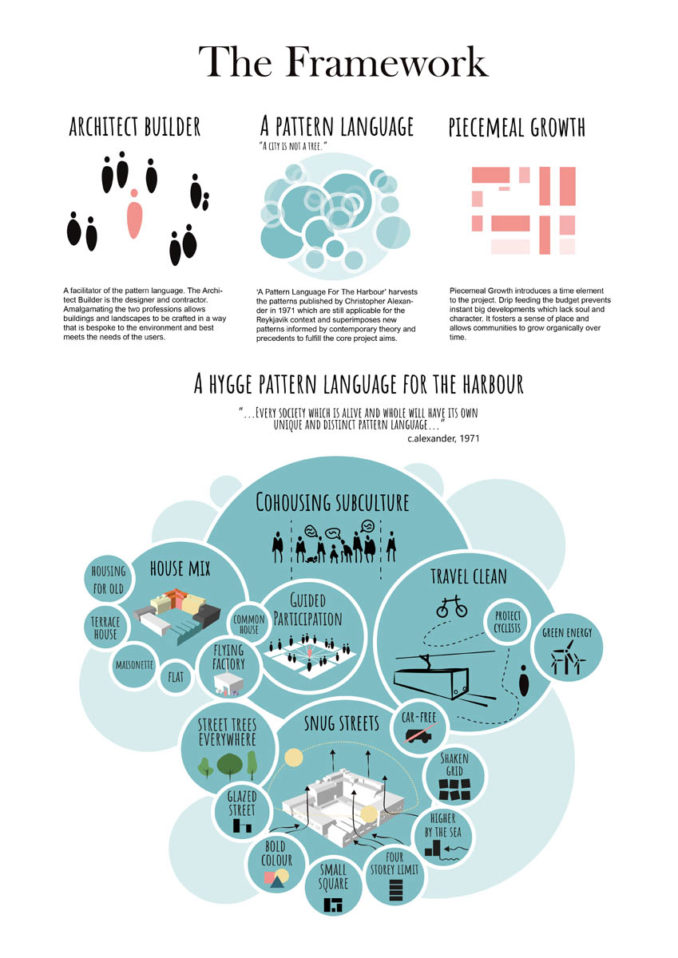
A planning/ design framework was formulated for the project to allow residents autonomy over their living environment and therefore foster a pride of place and cohesive community. The framework is inspired by Research Architect Christopher Alexander, who looked for a paradigm shift in how towns and cities are built. Alexander argued that a society cannot thrive until the people who live there are allowed to shape it. To achieve what Alexander termed ‘the quality without a name’, three components are fundamental:
• Architect-Builder;
• A Pattern Language; and
• Piecemeal Growth.
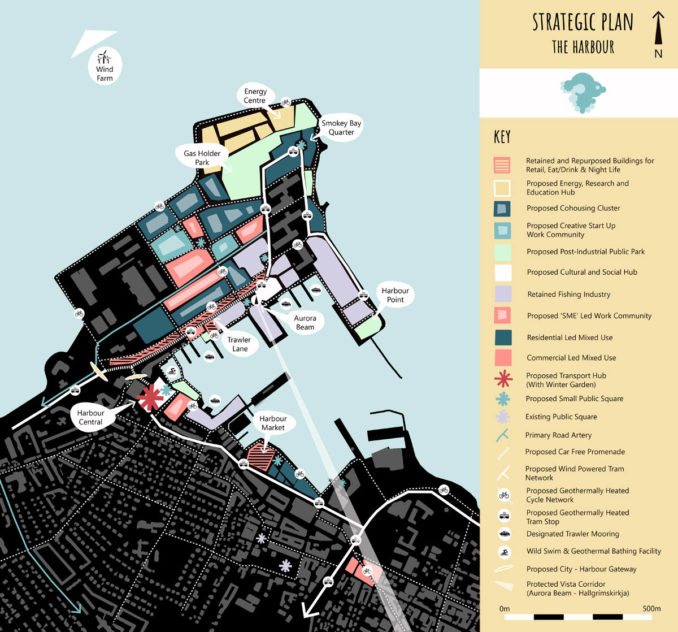
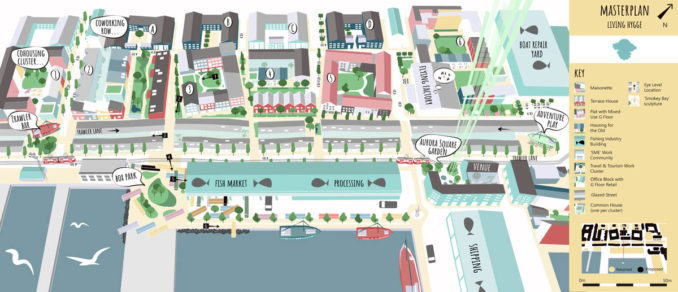
What I have presented is just one depiction of what ‘Living Hygge’ could be. If applied for real, the resident’s participation could lead to a very different looking outcome, however the intrinsic Icelandic quality and ‘hygge’ nature of each development would still remain because the Pattern Language and Architect-Builder steadily guide the Piecemeal Growth process which achieves the same socially restorative response. If successful, the framework could be applied throughout Iceland and in other similar climates to meet the age-old demand for new housing but in a socially responsible way.
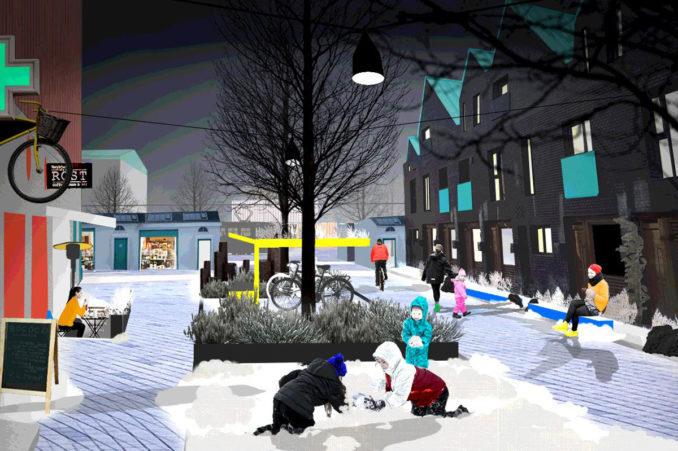
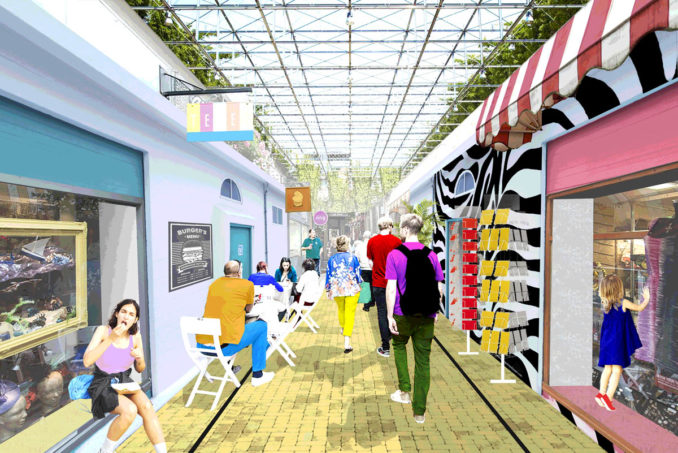
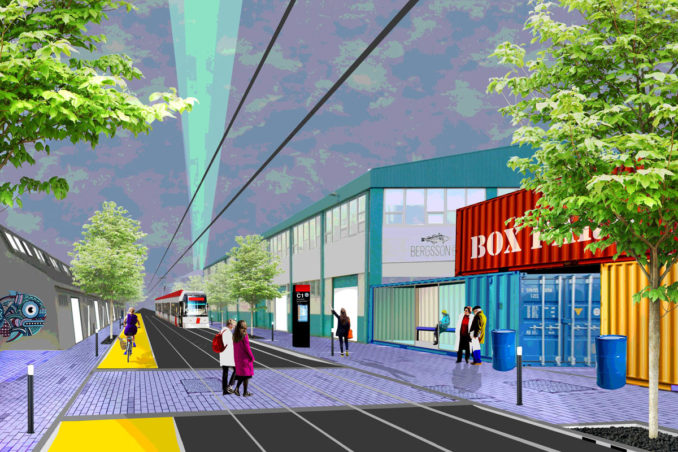
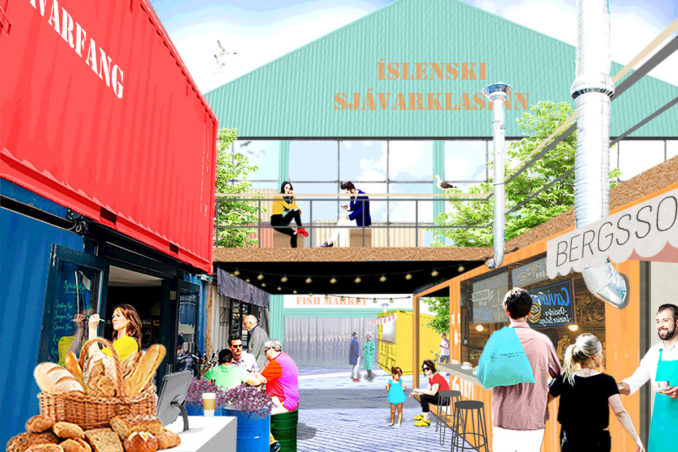
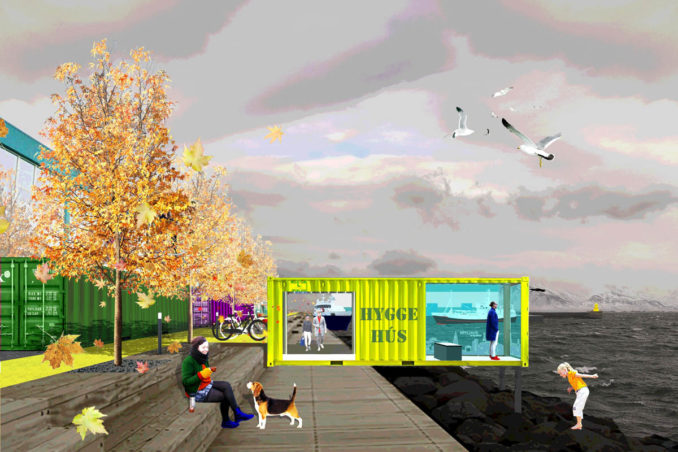
Living Hygge
Location: Reykjavik Harbour, Reykjavik, Iceland
Student: Alex Lowenhoff
Landscape Architecture MA, University of Sheffield, UK

